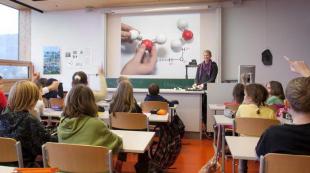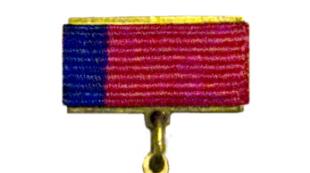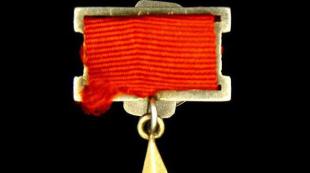Vitamin D deficiency rickets presentation. Presentation on the topic "rickets". Presentation plan
Rickets is a disease characterized by a violation of the mineralization of the growing bone, due to a temporary discrepancy between the needs of the growing body for phosphates and calcium and the insufficiency (immaturity) of the systems that ensure their delivery to the child's body.

Epidemiology of rickets
Cases of rickets are described in all countries of the world. Its frequency among young children varies according to different authors from 1.6% to 35%.
Rickets is a metabolic disease with a predominant violation of P-Ca metabolism, however, along with this, there is a violation of the metabolism of B, microelements, and vitamins.

Etiology and pathogenesis of rickets
For many years it was believed that the leading cause of rickets was vitamin D deficiency. Currently, as a result of the research, it has been revealed that the occurrence of rickets is due to a number of factors.

Factors contributing to the occurrence of rickets in children:
1. High rates of growth and development of children at an early age and an increased need for mineral components, especially in preterm infants (intensive intake of Ca and P to the fetus occurs in the last months of pregnancy)

2. Deficiency of Ca and P in food associated with nutritional deficiencies:
- irrational nutrition of a pregnant woman → Ca deficiency in a pregnant woman and fetus (if a woman does not consume dairy products);
- deficiency of B with restriction in the diet of meat, fish, eggs;
- late introduction of complementary foods;
- predominantly vegetarian complementary foods (cereals, vegetables) without sufficient
quantity B (meat, cottage cheese);

- excess carbohydrate food (porridge);
- feeding with unadapted milk mixtures;
- deficiency in the diet of vitamins A, C, group B (B1, B2, B6), folic acid, trace elements (zinc, copper, iron, magnesium, manganese, etc.).
3. Endocrine disorders: violation of the ratio of osteotropic hormones - parathyroid hormone and thyrocalcitonin (more often with congenital hypothyroidism).

4. Congenital and acquired intestinal diseases, accompanied by malabsorption of Ca, P, vitamin D.
5. Exo- and endogenous deficiency of vitamin D.
Vit.D enters the body in the form of 2 compounds:
- D2-ergocalciferol with food
- D3-cholecalciferol formed in the skin under the influence of UV radiation.
The original forms of vit.D2 and D3 are biologically inactive. Active forms of vitamin D are formed as a result of its metabolism in
liver and kidneys.

Vit.D enters the liver → 25-hydroxycholecalciferol (25-OHD3) → to the kidneys and is transformed into active metabolites, the main of which are 1.25 and 24.25 dioxycholecalciferol (1.25-OHD3 and 24.25-OHD3).
Both metabolites activate the processes of differentiation and proliferation of chondrocytes, osteoblasts and the production of bone protein by osteoblasts
osteocalcin.

In this regard, the cause of the development of endogenous hypovitaminosis D can be:
- congenital and acquired diseases of the liver and kidneys, accompanied by impaired metabolism of vitamin D;
- the existing immaturity of the enzyme systems of the intestine, liver, kidneys that metabolize vitamin D in children during the first months of life.
RICKITIS (rhachitis; Greek rhachis ridge, spine + itis; syn. hypovitaminosis D) - a disease
childhood due to lack of
body of vitamin D, characterized
violation of phosphorus-calcium metabolism,
bone formation and dysfunction
nervous system and internal organs.
Rickets in children is a disease of infancy associated with a deficiency or insufficient absorption of vitamin D3.
RICKITIS IN CHILDREN - INFANT DISEASE,ASSOCIATED WITH DEFICIENCY OR INSUFFICIENT
DIGESTIVATION OF VITAMIN D3.
The main causes of rickets are as follows:
Lack of ultraviolet radiation. Children born in autumn and winter
period, they spend less time outdoors, therefore they are at risk
for the development of rickets.
Artificial feeding. In human milk, all substances are in
optimal ratio and completely absorbed by the baby's body. Any
even the most expensive milk formula cannot be approximated in degree
assimilation of vitamins and minerals to human milk, therefore, part of the useful
substances are lost.
Nutritional factor - lack of protein in food. Children who eat porridge are more likely to
suffer from rickets. It is known that cereals contain a lot of chitinic acid,
binding calcium in the intestine.
Prematurity. Calcium and phosphorus are most intensively supplied from mother to
fetus in the last months of life. An infant born prematurely has
osteopenia - a small amount of minerals in the bones.
Low motor activity of the baby, which happens when there is a violation of the nervous
system or insufficient care (lack of massage, gymnastics).
Hereditary disorders of vitamin D metabolism.
Manifestations of rickets
MANIFESTATIONS OF ricketsAt the age of 1-1.5 months, the first signs of rickets appear
in the form of restlessness, trembling, profuse sweating. mothers
notice droplets of sweat on the nose, forehead, chin after feeding
newborn. The child often turns his head, as a result of which
baldness of the neck appears.
If rickets is not treated at this stage, later appear
skeletal changes - soft, pliable edges of the fontanel,
softening of the flat bones of the skull, O-shaped curvature
legs. The skull changes its configuration, the forehead becomes
convex, the frontal and parietal tubercles protrude, and the occipital
the area is flattened.
Rickets is characterized by a change in muscle tone, the result
which can become a protruding belly (its still
called "frog"), the divergence of the muscles of the anterior abdominal
walls, joint laxity.
Manifestations of rickets
MANIFESTATIONS OF ricketsDiagnosis of rickets
DIAGNOSIS OF ricketsThe following will help identify the disease
baby's blood counts:
Calcium and phosphorus levels;
Alkaline phosphatase;
The amount of parathyroid hormone;
Vitamin D level.
X-ray comes to the aid of the doctor
examination of the wrist, while in the pictures
areas of loosening of the bone tissue are visible.
Prevention of rickets
PREVENTION OF RICKITISSpecific prevention of rickets is carried out with the help of
an aqueous solution that is given to children in a daily dose of 500 IU,
which corresponds to 1 drop of the drug. All children in the autumn-winter
period it is recommended to use prophylactic doses
vitamin D, and premature babies should take the medicine
year-round.
Prevention of rickets in children begins long before it appears
into the world. A pregnant woman is advised carefully
organize your meals. The menu should be varied
have an optimal ratio of proteins, fats and carbohydrates (BJU).
Meat, milk, dairy products, cottage cheese and fish should
go into your daily diet.
Long walks in the air provide synthesis
vitamin in the skin and protect the unborn baby from disease.
Often doctors recommend taking multivitamin complexes.
for pregnant.
Prevention of rickets
PREVENTION OF RICKITISTreatment of rickets
TREATMENT OF ricketsVitamin D preparations are used to treat the disease, but for the fastest
recovery requires a whole range of activities: massage for rickets in children,
outdoor walks, hardening activities, gymnastics and methods
physiotherapy. The result largely depends on the consciousness of the parents and their
ability to fulfill all doctor's orders.
Babies should be outdoors for 2-3 hours daily, also
it is necessary to regularly ventilate the children's room. How to cure rickets in a child,
the local pediatrician will advise, who should immediately be told about “alarming
bells." He will select the right dose of vitamins and tell you how
should be nutrition for rickets in children.
Activities are carried out if the child has obvious signs of the disease.
An aqueous, oily and alcohol solution of vitamin D is produced. Pediatricians converge
in the opinion that the most fully absorbed aqueous solution is the drug Akvadetrim,
which provides a fast and long-lasting effect and is highly effective in
treatment of all forms of rickets.
1 drop of an aqueous solution contains 500 IU of the vitamin. The course dose depends on
the degree of the disease, As a rule, with mild rickets, 5 drops are prescribed
an aqueous solution of the vitamin, which is used for 30-45 days.
The drug is well tolerated by children and rarely causes complications.
Treatment of rickets
TREATMENT OF ricketsCauses of rickets and predisposing factors
CAUSES OF rickets and predisposingFACTORS
There are two main reasons for the decrease in vitamin D content in
body
The first is a violation of the formation of one's own (endogenous) vitamin D with a lack of
solar energy, or diseases of the organs involved in its production.
These include:
Hereditary disorders of vitamin D metabolism in the body
Chronically occurring liver diseases
Some kidney diseases
The second is a deficiency in the intake of vitamin D from food or diseases associated with
malabsorption in the gastrointestinal tract.
Here are some of them:
Celiac disease is a disease of the small intestine in which there is a death (atrophy)
villi of the internal mucous membrane necessary for the absorption of food.
Cystic fibrosis is a hereditary disease. Affects the broncho-pulmonary system and
GIT. In the gastrointestinal form of the disease, insufficient
the formation of digestive enzymes necessary for the digestion of food.
Intestinal dysbacteriosis, with prolonged diarrhea. With the wrong organization
feeding, hygiene violations, or after taking medications
(usually antibiotics).
The consequences of rickets in children
CONSEQUENCE OF RICKITIS IN CHILDRENPathology is not dangerous for the child, but in the absence
timely treatment of the consequences of rickets is very
serious. Often children who have had rickets suffer
caries of milk and permanent teeth, they have
curvature of the legs and some developmental delay.
Scoliosis due to skeletal deformities
flat feet, deformity of the pelvis. During the school period
the consequences of rickets are manifested in the form of myopia,
anemia, poor immunity and soreness (frequent
bronchitis and pneumonia). At an older age, people
suffer from osteoporosis.
Rickets in infants is a rather serious disease,
Therefore, it is important to monitor the condition of the child with special
thoroughness. When alarms occur
contact a doctor immediately.
slide 1
Slide text:
Rickets in children
Completed by: Baimagambetov N.
Kasanov R. .
Group: OM 12-68-01.02.
slide 2

Slide text:
- a polyetiological metabolic disorder caused by a temporary discrepancy between the high need of a growing organism for phosphorus and calcium, on the one hand, and the insufficiency of systems that ensure their transport and inclusion in metabolism, on the other.
slide 3

Slide text:
Relevance
The frequency of R. in children of 1 year of age in different countries is from 20 to 65%
The frequency of mild forms of R. remains high.
Almost every 3-4-month-old baby has 2-3 mild symptoms of R.
slide 4

Slide text:
Story
Rickets is widespread in children during the first two years of life.
This disease has been known for a very long time, the first mention of rickets is found in the writings of Soranus of Ephesus (98-138 AD) and Galen (131-211 AD).
A complete clinical and pathoanatomical description of rickets was made by the English orthopedist F. Glisson in 1650.
For some time, rickets was called the "English disease", since in England there was a high frequency of its spread.
slide 5

Slide text:
Etiology
Since the discovery of vitamin D and its role in the body, it has long been believed that the leading cause of R. is exclusively a deficiency of this vitamin.
It is now generally accepted that the leading cause is a deficiency of phosphates and Ca salts, with hypophosphatemia being more important and more common than hypocalcemia.
slide 6

Slide text:
Slide 7

Slide text:
The role of calcium in the body:
In addition to being the basis of the skeleton, calcium is also involved in providing:
blood clotting;
protein synthesis, cell division and differentiation;
immunogenesis;
myocardial contraction, automatism of the heart;
transmission of nerve impulses, conjugation (functions of synapses);
regulation of membrane permeability;
stimulation of the activity of certain enzymes;
secretion and action of hormones
Slide 8

Slide text:
The main causes of deficiency of phosphates and calcium salts in children
prematurity
increased need for minerals in conditions of intensive growth (disease of a growing organism);
insufficient intake of calcium and phosphorus with food (irrational feeding);
violation of the transport of phosphorus and calcium in the gastrointestinal tract, kidneys (immaturity of enzyme systems or pathology of these organs);
Slide 9

Slide text:
Reasons (continued)
endocrine disorders (dysfunction of the thyroid and parathyroid glands);
unfavorable ecological situation (accumulation of lead, chromium, strontium salts in the body, deficiency of magnesium, iron, etc.);
exogenous or endogenous vitamin D deficiency
Slide 10

Slide text:
Pathogenesis
Lack of Ca and P in the diet, vitamin D deficiency
hypocalcemia
secretion of parathyroid hormone
“Washing out” of inorganic Ca from bones
Suppression of phosphate reabsorption in the kidneys
hypophosphatemia
Acidosis
Stopping CaPO4 deposition in bones
Osteomalacia, bone deformity, proliferation of defective osteoid tissue in growth zones
Violation of the excitability of the central nervous system and the functions of internal organs
Impaired immune response
Stimulation of the pancreas
slide 11

Slide text:
slide 12

Slide text:
Clinical picture
The onset of the disease is usually in late autumn, winter or early spring.
The first signs of rickets in full-term babies are usually at the 2-3rd month of life (in premature babies a little later)
By 5-6 months of age, if treatment is not carried out, there is a rapid progression of all symptoms.
slide 13

Slide text:
Clinic (continued)
Initial period:
restlessness, fearfulness, irritability, sweating, red dermographism
muscle hypotension, constipation
compliance of the sutures of the skull, softening of the edges of the large fontanel
Slide 14

Slide text:
Clinic (continued)
Rise period:
Severe sweating, emotional lability, lag in psychomotor development
increased constipation, "frog" stomach, Harrison's furrow, "looseness" of the joints
Slide 15

Slide text:
slide 16

Slide text:
chest deformity ("cobbler's chest", "chicken breast")
curvature of the spine (kyphosis, lordosis, scoliosis)
Slide 17

Slide text:
Slide 18

Slide text:
Clinic (continued)
The period of convalescence is characterized by an improvement in the well-being and condition of the child with the reverse development of symptoms.
The period of residual effects is diagnosed in children with severe bone deformities.
Seen in children aged 2-3 years
Long bone deformities disappear with time
Deformations of flat bones (bumps, flattening of the occiput, malocclusion, deformities of the chest, pelvic bones) decrease, but do not completely disappear.
Slide 19

Slide text:
The nature of the clinical course
The acute course is observed more often in the first months of life, especially in premature and rapidly growing children; babies born as a result of multiple pregnancy; characterized by severe neurological disorders, significant hypophosphatemia, predominance of osteomalacia processes over bone tissue hyperplasia
Slide 20

Slide text:
The subacute course is observed more often in children aged 6-9 months, as well as in children with malnutrition, and is characterized by a slower development of the process.
It is characterized by moderate or minor neurological disorders, minor changes in the biochemical composition of the blood, and the prevalence of osteoid hyperplasia processes.
The recurrent course is more characteristic of secondary rickets or its hereditary forms.
slide 21

Slide text:
slide 22

Slide text:
Normal indicators of R-Ca metabolism:
Blood Ca = 2.25-2.5 mmol/l
P blood = 1.45-2.1 mmol / l
Ca:P = 2:1
AP \u003d 140-220 units.
The daily requirement for Ca in infants is 50 mg/kg
Daily requirement for vitamin D - 400-500 IU (10 mcg)
slide 23

Slide text:
slide 24

Slide text:
Differential Diagnosis
perinatal CNS injury
lingering pneumonia
hydrocephalus
cerebral palsy
rickets-like diseases (phosphate-diabetes, renal tubular acidosis, de Toni-Debré-Fanconi syndrome)
congenital dislocation of the hip
chondrodystrophy, etc.
Slide 25

Slide text:
Prevention
Antenatal
Postnatal
specific
specific
Nonspecific
Nonspecific
Rational feeding, hardening, massage and gymnastics, constant intake of a lactating complex of vitamins, adherence to the daily routine, walks in the fresh air
In a healthy full-term baby, it should start from the age of 4 weeks, regulated by the Order of the Ministry of Health "On the approval of protocols for the education of children for the specialty" Pediatrics "No. 9 dated 10.01.2005."
slide 26

Slide text:
Treatment
Non-specific treatment includes rational feeding, organizing a regimen appropriate for the age of the child, prolonged exposure to fresh air with sufficient insolation, therapeutic exercises and massage, hardening, and treatment of concomitant diseases.
Slide 27

Slide text:
Treatment (continued)
Specific treatment - the appointment of vitamin D, depending on the severity of rickets:
mild degree - 2000 IU / day
medium-severe degree - 4000 IU / day
Severe degree - 5000 IU / day for tech. 30-45 days followed by a transition to 2000 IU / day for 30 days (2-3 courses / year with intervals m / they are at least 3 months until the child reaches 3-5 years)
Slide 28

Slide text:
Treatment is carried out during the peak period, confirmed by biochemical data
Within one year, it is permissible to conduct only one treatment course, followed by a transition to maintenance prophylactic doses.
Treatment is controlled by Sulkovich's test. The study is carried out before the appointment of a therapeutic dose, and then every 7-10 days of treatment.
Upon receipt of the result of the test in the form of "3" or "4", the therapeutic dose of the drug is canceled, a transition is made to the prophylactic dose of Vit. D.
Slide 29

Slide text:
Concomitant Therapy
Preparations of orotic acid and carnitine hydrochloride - for children with poor weight gain and malnutrition (Potassium orotate 20 mg / kg / day in 2 doses one hour before feeding 3-4 weeks. Carnitine hydrochloride (20% aqueous solution) - 4-10 drops each a child under one year old and 15 drops over a year old 3 r / d 30 minutes before meals for 1 month.)
To normalize the function of the pancreas and reduce autonomic disorders - magnesium preparations (Asparkam, Panangin, 1% solution of magnesium sulfate) 10 mg / kg / day for 3 weeks.
Calcium salts (calcium lactate, calcium phosphate, calcium chloride, calcium citrate, calcium glycerophosphate, etc.) are prescribed for 2-3 weeks only for rickets in premature babies, especially with severe craniotabes, with a calcium-penic variant.
slide 30

Slide text:
Physiotherapy
Not earlier than 2 weeks from the start of specific therapy - massage and exercise therapy
Children older than 6 months after the end of the course of treatment are prescribed balneotherapy in the form of therapeutic baths
With severe skeletal deformities and muscle hypotension, applications of heated sand, paraffin, peat and therapeutic mud are recommended (for children under 2 years old only on the lower limbs)
Slide 31

Slide text:
Forecast
In general, with timely and adequate treatment - favorable.
For children who have had rickets, it is advisable to conduct dispensary observation for at least 3 years.
Rickets is not a contraindication for vaccinating. Vaccination can be carried out 2 weeks after the appointment of vitamin D.
slide 32

Slide text:
conclusions
The frequency of mild forms of R. is underestimated and remains very high
The prognosis for R. depends on the degree of its severity, the timeliness of diagnosis and the adequacy of treatment.
R.'s prevention occupies an important place in the complex of measures to improve the health of children, reduce childhood morbidity and disability
Slide 33

Slide text:
Literature
Pediatrics: Textbook for students of higher medical. Proc. Institutions III-IV levels of accreditation. - 2nd ed., Rev. and additional /V.G. Maidannik. -Kharkov: Folio, 2002. - 6-25.
Rickets (Manual for doctors) / Romanyuk F.P., Alferov V.P., Kolmo A.E., Chugunova O.V. - St. Petersburg, 2002. - 62 p.
slide 34

Similar Documents
Pathological processes interfering with vitamin D metabolism. Biochemical findings associated with rickets. Conditions and main clinical manifestations associated with rickets. Influence of phosphorus metabolism and chronic renal failure on the disease.
abstract, added 05/16/2012
Definition of rickets, its etiology and pathogenesis. Description of the clinical picture of the disease, methods of its treatment and prevention. Characteristics of rickets-like diseases. Consideration of hereditary nephropathies accompanied by rickets-like changes.
abstract, added 05/20/2014
Description of the causes of rickets. Characterization of signs of vitamin D deficiency, which stimulates the process of reabsorption of phosphates and amino acids in the kidneys and an increase in phosphorus and calcium in the blood. Description of changes in the musculoskeletal system in rickets.
abstract, added 02/25/2010
Rickets as a polyetiological disease of infants and young children: causes and features of the course of the disease. Study of pathogenetic factors in rickets. The first signs and symptoms of rickets. Classification of rickets according to S. Dulitsky.
test, added 05/16/2015
An outline of the features of the etiology and pathogenesis of disorders associated with the formation and insufficiency of bone mineralization in the child's body. Classification of severity and hyperplasia of osteoid tissue in the disease. Treatment and prevention of rickets.
presentation, added 10/31/2013
Diseases associated with impaired calcium and vitamin D metabolism. Factors predisposing to rickets. Principles of therapeutic nutrition for young children with rickets, spasmophilia, hypervitaminosis D. Antenatal and postnatal specific prevention.
abstract, added 03/11/2018
Features of the onset of the disease with an overdose of vitamin D, its uncontrolled use, inconsistencies in the degree and severity of rickets, as well as with increased sensitivity of the body to the vitamin. Characteristics of the manifestation of hypervitaminosis D.
abstract, added 02/29/2016
The functional significance of calcium in the body. The role of bone tissue in the implementation of metabolism. The mechanism of phosphorus metabolism and regulation of phosphorus-calcium supply of the body. Causes of high and low calcium levels. Phosphaturia symptoms.
abstract, added 03/01/2017
Analysis of the dynamics of the level of pro-inflammatory / anti-inflammatory cytokines and soluble receptors in the blood serum and saliva of children. The content of calcium, phosphorus, hormones and biomarkers of the regulation of phosphorus-calcium metabolism in the blood serum and saliva of children.
Calcium metabolism disorders are called calcification. Two forms of calcinosis: systemic and limited. Three forms of calcification: metastatic, dystrophic and metabolic. Rickets. Alcoholic hepatitis. Tuberculosis. Generalized hematogenous tuberculosis.































Src="https://present5.com/presentation/3/73752168_33949279.pdf-img/73752168_33949279.pdf-1.jpg" alt=">Pediatrics presentation. Topic: Rickets in children Completed by student 31 Maksimenko group"> Презентация по предмету педиатрия. Тема: Рахит у детей Выполнила студентка 31 группы Максименко Екатерина!}
Src="https://present5.com/presentation/3/73752168_33949279.pdf-img/73752168_33949279.pdf-2.jpg" alt=">Content Rickets is Prevalence Etiology Vitamin D Role"> Содержание Рахит – это Распространенность Этиология Витамин Д Роль питания Физиологические потребности в витамине Д Патогенез Начальный период Период разгара Период реконвалесценции Период остаточных явлений!}
Src="https://present5.com/presentation/3/73752168_33949279.pdf-img/73752168_33949279.pdf-3.jpg" alt="> Rickets is Rickets (Greek: rhahis = spine) – disease of children"> Рахит - это Рахит (греч. rhahis – спинной хребет) – заболевание детей раннего возраста, при котором в связи с дефицитом витамина Д нарушены кальциево-фосфорный обмен, процессы костеобразования и минерализации костей, а также функция нервной системы и внутренних органов.!}
Src="https://present5.com/presentation/3/73752168_33949279.pdf-img/73752168_33949279.pdf-4.jpg" alt=">Prevalence "Classic" rickets remains a very common disease. It affects babies during the fast"> Распространенность “Классический” рахит остается весьма распространенным заболеванием. Он поражает младенцев в период быстрого роста в возрасте 2 мес – 2 года с частотой 10 -35% .!}
Src="https://present5.com/presentation/3/73752168_33949279.pdf-img/73752168_33949279.pdf-5.jpg" alt=">Etiology The occurrence of rickets in young children is associated with insufficient intake of"> Этиология Возникновение рахита у детей раннего возраста связано с недостаточным поступлением в организм ребенка витаминов группы Д.!}
Src="https://present5.com/presentation/3/73752168_33949279.pdf-img/73752168_33949279.pdf-6.jpg" alt=">Vitamin D than 10 structural analogues,"> Витамин Д Название “витамин Д” присвоено группе веществ, представленной более чем 10 структурными аналогами, обладающими антирахитическими свойствами различной активности. Основные из них витамины Д 2, или эргокальциферол, и витамин Д 3, или холекальциферол.!}
Src="https://present5.com/presentation/3/73752168_33949279.pdf-img/73752168_33949279.pdf-7.jpg" alt=">Vitamin D source Vitamin D2, or ergocalciferol, was derived from ergot purple,"> Источник витамина Д Витамин Д 2, или эргокальциферол, был получен из спорыньи пурпурной, в небольших количествах содержится в растительном масле, маргарине и в ростках пшеницы. Витамин Д 3, или холекальциферол, обнаружен в жире трески, тунца, в яичном желтке. Тем не менее витамин Д поступает в организм с пищей в основном в виде предшественников. Главный из них 7 - дегидрохолестерин.!}
Src="https://present5.com/presentation/3/73752168_33949279.pdf-img/73752168_33949279.pdf-8.jpg" alt=">The role of nutrition"> Роль питания Значение питания в получении витамина Д важно в случае нарушения эндогенного синтеза активных форм витамина Д. Поэтому принципиальное значение принадлежит поступлению с едой прежде всего холекальциферола, что осуществляется через продукты животного происхождения.!}
Src="https://present5.com/presentation/3/73752168_33949279.pdf-img/73752168_33949279.pdf-9.jpg" alt=">Physiological requirements for vitamin D To"> Физиологические потребности в витамине Д Повседневное питание небогато витамином Д, который относится к витаминам, мало распространенным в природе, физиологические суточные потребности в витамине Д определяются, по данным ВОЗ, следующим образом: для взрослых – 100 МЕ, для детей – 400 МЕ, для беременной или кормящей женщины – 1000 МЕ.!}
Src="https://present5.com/presentation/3/73752168_33949279.pdf-img/73752168_33949279.pdf-10.jpg" alt="> Table 1. Clinical classification of rickets Period of illness Severity of the process Nature of the course Initial I degree"> Таблица 1. Клиническая классификация рахита Период болезни Тяжесть процесса Характер течения Начальный I степень – легкая Острое Разгар болезни II степень – средней Подострое тяжести Реконвалесценции III степень – тяжёлая Рецидивирущее!}
Src="https://present5.com/presentation/3/73752168_33949279.pdf-img/73752168_33949279.pdf-11.jpg" alt=">Regulation of calcium metabolism The main physiological function of vitamin D and its metabolites is to maintain"> Регуляция обмена кальция Основной физиологической функцией витамина Д и его метаболитов является поддержание гомеостаза кальция и фосфора в организме, что необходимо для нормального созревания костной ткани, хода обменных и физиологических процессов. Дефицит поступления в организм солей кальция, фосфора, магния, меди, цинка, железа, кобальта и некоторых других микроэлементов, белка и отдельных аминокислот также сопровождается нарушениями фосфорно-кальциевого обмена и возникновением клинической картины рахита.!}
Src="https://present5.com/presentation/3/73752168_33949279.pdf-img/73752168_33949279.pdf-12.jpg" alt="> The supply of calcium to the body is largely related to the activity of the parathyroid glands, which produce two"> Обеспеченность организма кальцием во многом связана с деятельностью паращитовидных желез, вырабатывающих два гормона – паратгормон и кальцитонин, которые вместе с витамином Д обеспечивают регуляцию кальциевого обмена. Секреция паратгормона зависит от концентрации ионизированного кальция в сыворотке крови: повышение концентрации ионизированного кальция снижает секрецию, снижение – повышает. Мишени для паратгормона: почки, костная ткань, желудочно-кишечный тракт. Рецепторно- клеточная связь гормона реализуется через мембранно-связанную аденилатциклазу и характеризуется преимущественно изменением обмена кальция.!}
Src="https://present5.com/presentation/3/73752168_33949279.pdf-img/73752168_33949279.pdf-13.jpg" alt="> Action on bone tissue is characterized by three main effects: Ø inhibition of collagen synthesis active"> Действие на костную ткань характеризуется тремя основными эффектами: Ø торможением синтеза коллагена в активных остеобластах; Ø активацией остеолизиса остеокластами; Ø ускорением созревания клеток- предшественников остеобластов и остеокластов.!}
Src="https://present5.com/presentation/3/73752168_33949279.pdf-img/73752168_33949279.pdf-14.jpg" alt=">Pathogenesis The development of the disease is largely due to the anatomical and physiological characteristics of the child's body. In particular, intensive"> Патогенез Развитие заболевания во многом обусловлено анатомо-физиолгическими особенностями детского организма. В частности, интенсивный рост ребенка грудного возраста, требующий поступления большого количества пластического материала, лабильный и напряженный обмен веществ и особое строение костной ткани, представленное не кристаллами оксиапатита, а легкорастворимым кальций- фосфатом, в значительной мере способствуют возникновению рахита.!}
Src="https://present5.com/presentation/3/73752168_33949279.pdf-img/73752168_33949279.pdf-15.jpg" alt=">Table 2. Hereditary and acquired nephropathies and RD Hereditary Acquired nephropathies Congenital familial glomerulonephritis"> Таблица 2. Наследственные и приобретенные нефропатии и РЗ Наследственные Приобретённые нефропатии Врожденный семейный Гломерулонефрит с Гипофосфатемический рахит нефротическим синдромом или фосфат-диабет Хроническая почечная Аутосомно-доминантный недостаточность Аутосомно-рецессивный Дисметаболическая Сцепленный с Х-хромосомой нефропатия с кристаллурией Тубулопатии Тип 1 – дистальный, синдром Баттлера – Олбрайта Тип 2 – проксимальный Болезнь де Тони – Дебре – Фанкони Наследственный нефрит!}
Src="https://present5.com/presentation/3/73752168_33949279.pdf-img/73752168_33949279.pdf-16.jpg" alt=">Table 3. Malabsorption syndrome, liver disease and RD Malabsorption syndrome Diseases Liver Celiac Atresia"> Таблица 3. Синдром мальабсорбции, болезни печени и РЗ Синдром мальабсорбции Болезни печени Целиакия Атрезия и аномалии развития Муковисцидоз желчных путей Экссудативная энтеропатия Гепатиты и циррозы печени Энтерит, энтероколит Болезни накопления Резекция участка желудка (гликогенозы, болезнь или тонкой кишки Вильсона – Коновалова) Лекарственные поражения!}
Src="https://present5.com/presentation/3/73752168_33949279.pdf-img/73752168_33949279.pdf-17.jpg" alt=">Predisposing factors Numerous perinatal factors predispose to the occurrence of rickets (mother's diseases during time"> Предрасполагающие факторы Предрасполагают к возникновению рахита многочисленные перинатальные факторы (заболевания матери во время беременности, гестоз, неблагоприятное течение родов и др.). Благодаря тому что интенсивное поступление кальция и фосфора от матери к плоду происходит в последние месяцы беременности, ребенок менее 30 нед гестации уже при рождении имеет часто остеопению – более низкое содержание минеральных веществ в кости. Этому же способствуют нерациональные питание и режим жизни беременной.!}
Src="https://present5.com/presentation/3/73752168_33949279.pdf-img/73752168_33949279.pdf-18.jpg" alt="> Immaturity of the enzyme systems of the liver, kidneys, skin, as well as their diseases , provoke the development"> Незрелость ферментных систем печени, почек, кожи, как и их заболевания, провоцируют развитие рахита у детей. Особенно часто рахит возникает у недоношенных детей. Для нормального процесса окостенения важно достаточное содержание в пище белка, кальция и фосфора при правильном их соотношении, микроэлементов магния и цинка, витаминов группы В и А. К рахиту приводит недостаточная двигательная активность ребенка, так как кровоснабжение кости и электростатическая напряженность существенно повышаются при мышечной деятельности.!}
Src="https://present5.com/presentation/3/73752168_33949279.pdf-img/73752168_33949279.pdf-19.jpg" alt=">Initial period"> Начальный период В начальном периоде у детей первого года жизни изменения отмечаются со стороны нервной и мышечной систем. Ребенок становится раздражительным, часто беспокойным, вздрагивает при громких звуках, появлении яркого света, тревожно спит. У него появляются потливость, особенно головы, облысение затылка. Через 2 -3 нед от начала заболевания обнаруживается мягкость костных краев в области большого родничка, по ходу стреловидного и ламбдовидного швов. Тонус мышц снижается. Содержание кальция в крови остается нормальным, уровень фосфора несколько снижается. При исследовании мочи обнаруживается фосфатурия.!}
Src="https://present5.com/presentation/3/73752168_33949279.pdf-img/73752168_33949279.pdf-20.jpg" alt=">Heat period During the peak of the disease, symptoms from the nervous and muscular"> Период разгара В период разгара болезни прогрессируют симптомы со стороны нервной и мышечной систем. Усиливаются потливость, слабость, гипотония мышц и связочного аппарата, заметным становится отставание в психомоторном развитии. Этому периоду особенно свойственно быстрое прогрессирование костных изменений: размягчение плоских костей черепа, появление краниотабеса, уплощение затылка, асимметричная форма головы. Разрастание остеоидной ткани в точках окостенения плоских костей черепа ведет к образованию лобных и затылочных бугров. Из-за этого голова приобретает квадратную или ягодицеподобную форму. Могут возникнуть деформации лицевой части черепа – седловидный нос, “олимпийский” лоб, нарушения прикуса и пр.!}
Src="https://present5.com/presentation/3/73752168_33949279.pdf-img/73752168_33949279.pdf-21.jpg" alt=">Convalescence period During this period, the child does not show signs of active rickets, gradually"> Период реконвалесценции В этот период у ребенка не определяются признаки активного рахита, постепенно исчезают вегетативные и неврологические симптомы, улучшается общее самочувствие, нормализуется концентрация кальция и фосфора в крови, хотя уровень кальция может быть и сниженным из-за интенсивного его отложения в костях. Средние сроки – от 6 мес до 2 лет жизни.!}
Src="https://present5.com/presentation/3/73752168_33949279.pdf-img/73752168_33949279.pdf-22.jpg" alt=">Period of residual effects slows down"> Период остаточных явлений Признаки клинической картины рахита ослабевают по мере того, как замедляется рост ребенка. При выздоровлении в возрасте 2 -3 лет остаточные явления, приводящие к выраженным деформациям, продолжают оставаться в позвоночнике и костях конечностей. При рентгенологическом обследовании заметно появление и увеличение объема костных точек роста, утолщение с классическим признаком “черного контура” и очертаний кости, утолщение коркового слоя кости (надкостница, формирующая контурную линию кости) и видимость двойного контура, представляющего собой старую кость, окруженную чехлом новой кости.!}
Src="https://present5.com/presentation/3/73752168_33949279.pdf-img/73752168_33949279.pdf-23.jpg" alt=">Severity of course Mild rickets (I) is diagnosed based on the presence of changes characteristic"> Тяжесть течения Диагноз рахита легкой степени (I) ставят на основании наличия изменений, характерных для начального периода рахита. Средней тяжести рахит (II степень) характеризуется умеренно выраженными изменениями костной системы и внутренних органов. Тяжелый рахит (III степень) диагностируется при обнаружении у ребенка выраженных деформаций костей, тяжелых поражений нервной системы и внутренних органов, анемии, приведших к отставанию в физическом и нервно-моторном развитии. Могут появиться такие осложнения, как вторичные инфекции или тетания, судороги, сердечная недостаточность, ларингоспазм (спазм голосовых связок), гипокальциемия (недостаток кальция) и даже внезапная смерть.!}
Src="https://present5.com/presentation/3/73752168_33949279.pdf-img/73752168_33949279.pdf-24.jpg" alt="> Acute rickets"> Острый рахит Острое течение рахита знаменуется признаками остеомаляции костной системы, выраженными неврологическими симптомами.!}
Src="https://present5.com/presentation/3/73752168_33949279.pdf-img/73752168_33949279.pdf-25.jpg" alt=">Subacute rickets baby lesions"> Подострый рахит Подострое течение характеризуется выраженными симптомами остеоидной гиперплазии, одновременным наличием у ребенка поражений костей в разные периоды первого года жизни, так как при рахите череп поражается в первые 3 мес жизни, деформации грудной клетки возникают, как правило, в 3 -6 мес, а деформации нижних конечностей – во втором полугодии жизни.!}
Src="https://present5.com/presentation/3/73752168_33949279.pdf-img/73752168_33949279.pdf-26.jpg" alt="> Recurrent rickets clinical, laboratory and"> Рецидивирующий рахит Рецидивирующее, или волнообразное, течение рахита устанавливают, если имеются клинические, лабораторные и рентгенологические признаки активного рахита, выявленные у ребенка с клиническими и рентгенологическими указаниями на закончившийся в прошлом активный рахит (наличие полосок обызвествления).!}
Src="https://present5.com/presentation/3/73752168_33949279.pdf-img/73752168_33949279.pdf-27.jpg" alt=">Bone signs Bone changes are the leading clinical signs of rickets. Head: craniotabes"> Костные признаки Ведущими клиническими признаками рахита являются костные изменения. Голова: краниотабес определяется в затылочной или теменной области, где череп размягчается настолько, что поддается сдавливанию. Ряд авторов рассматривают данный симптом как физиологическое явление до 4 мес; продолжительность времени, в течение которого роднички и швы между костями черепа зарастают, также должна инерпретироваться как состояние с большими индивидуальными отклонениями; запаздание появления зубов.!}
Src="https://present5.com/presentation/3/73752168_33949279.pdf-img/73752168_33949279.pdf-28.jpg" alt="> Chest: rickety "rosary" as a result of cartilage hypertrophy between the ribs And"> Грудная клетка: рахитические “четки” как результат гипертрофии хряща между ребрами и грудиной в форме утолщений по обе стороны грудины; деформация грудной клетки. Позвоночник: изменения в костях позвоночника реализуются в отсутствие физиологических изгибов и появлении патологических искривлений по типу кифозов, лордозов и сколиозов.!}
Src="https://present5.com/presentation/3/73752168_33949279.pdf-img/73752168_33949279.pdf-29.jpg" alt="> Limbs: classic epiphyseal swelling, epiphyseal thickening due to proliferation bad calcified bone"> Конечности: классическая эпифизарная припухлость, утолщение эпифиза из-за пролиферации плохо кальцифицированного костного матрикса, что особенно заметно на лодыжках и запястьях; деформация развития тазобедренных суставов и костей нижних конечностей, появляющаяся в конце первого и в начале второго года жизни (0 -, К- и Х-образные ноги, плоский рахитический таз)!}
Src="https://present5.com/presentation/3/73752168_33949279.pdf-img/73752168_33949279.pdf-30.jpg" alt=">Non-specific treatments regime"> Неспецифические методы лечения Неспецифическая терапия включает в себя организацию правильного санитарно- гигиенического режима с достаточным пребыванием ребенка на свежем воздухе, прогулками в любой сезон года, полноценным сном при условии охраны ребенка от излишних внешних раздражителей (шума, света). В период бодрствования следует стимулировать психическую и двигательную активность ребенка.!}
Src="https://present5.com/presentation/3/73752168_33949279.pdf-img/73752168_33949279.pdf-31.jpg" alt=">Prevention Vitamin D deficiency is eliminated by systematically taking it in the form of a drug, beginning"> Профилактика Недостаточность витамина Д ликвидируется систематическим приемом его в виде лекарственного препарата, начиная с первых недель жизни до 1, 5 -4 лет. Детям с 3 -месячного возраста надо давать ударные дозы величиной 200 000 ME, т. е. 5 мг витамина Д 3 каждые 5 -6 мес. Риск гипервитаминоза при этом, за исключением случаев повышенной чувствительности к витамину Д, исключительно мал. С другой стороны, профилактику рахита начинают еще до рождения ребенка. При патронаже беременных женщин обращают внимание будущей матери на необходимость соблюдения правильного режима дня с чередованием труда и отдыха, исключения физических перегрузок, достаточного пребывания на свежем воздухе, рационального питания.!}
Src="https://present5.com/presentation/3/73752168_33949279.pdf-img/73752168_33949279.pdf-32.jpg" alt="> macronutrients,"> Беременные женщины должны употреблять в пищу достаточное количество витаминов, микро- и макроэлементы, продукты, содержащие полноценные белки, ненасыщенные жирные кислоты. Обязательным является соблюдение правил личной гигиены, полезны занятия лечебной физкультурой. Во время беременности происходит адаптация фосфорно-кальциевого метаболизма матери к потребностям плода. Общий уровень кальция у беременной женщины уменьшается примерно на 8% по сравнению с содержанием кальция до момента беременности.!}









